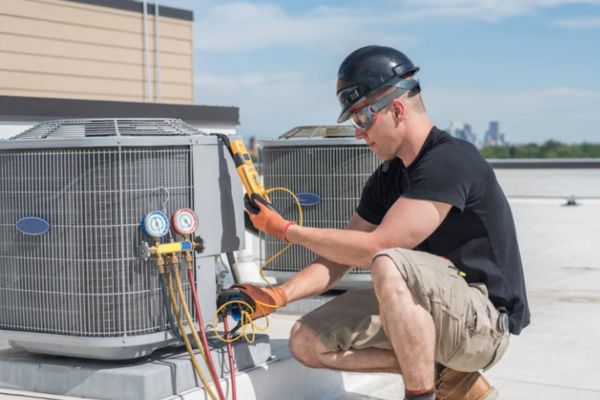It’s easy to forget about your HVAC system—until something goes wrong. Most of us rely on it daily for comfort but rarely think about its maintenance. Taking small preventive steps now can prevent bigger issues, especially when winter is close or if your system continues to run in a warm climate.
If you’re getting ready to cover your HVAC for the season or want to protect it all year, using a screen or cover can help your system last longer and work better.
What Is an HVAC Screen, and How Does It Work?
An HVAC screen is a special filter that fits over the compressor to stop small particles like pollen, dust, and other debris from getting inside. It helps protect the system by catching things before they cause damage. If you live in an area with a lot of pollen or yard waste, these screens can really help keep your HVAC system and the air in your house cleaner.
They can also block things like cottonwood fluff, grass clippings, and flower petals. This extra protection can make a big difference in improving air quality and comfort for people with allergies.
Do You Need an HVAC Screen or Cover?
The answer depends on your environment and the condition of your HVAC system. If you frequently replace indoor air filters, you might not think an outdoor screen would make a significant difference. However, an HVAC screen can filter out external debris, which keeps components from getting clogged and improves your system’s efficiency. This is especially beneficial if you have seasonal allergies or live in an area prone to high levels of dust or pollen.
Adding a screen or cover can also extend the life of your system. By keeping cooling coils and other components clean, the unit doesn’t have to work as hard, which reduces wear and tear. This not only saves you money on energy costs but could also help you avoid costly repairs.
How to Clean Your HVAC Screen
If you decide to install a filter screen, regular cleaning will help you get the best results. It’s ideal to clean it once a month or as often as you change your indoor air filters. The process is straightforward: detach the screen from your unit, spray it with water, and use a soft brush or broom to remove any remaining debris.
Allow the screen to dry fully before reattaching it to your compressor unit. During peak pollen season, you may need to wipe it down more frequently to ensure all particles are removed. A clean screen means a more efficient system, as airflow won’t be restricted by trapped debris.
Key Benefits of Installing an HVAC Screen or Cover
An HVAC screen, like the filters in your home and car, helps you breathe cleaner air by capturing dust and pollen before it circulates inside. This additional filter won’t prevent your system from functioning without one, but it can noticeably improve both your air conditioner’s efficiency and your energy bills. You might find that, over time, the screen pays for itself through these energy savings.
If you’ve already covered up your HVAC compressor for the season, you can add a screen as part of your spring checklist. Once installed, it will serve as an additional barrier against debris and improve the overall efficiency of your unit. Taking this small step now could result in fewer issues and lower costs later on.
Conclusion
Adding a screen or cover to your HVAC unit might not seem like a big deal, but it can really help. It keeps dirt and leaves from getting inside, which makes the air in your home cleaner and helps your HVAC work better and last longer. Plus, it might even save you money on energy bills. It’s a simple way to protect your system, whether it’s for winter or all year round.



